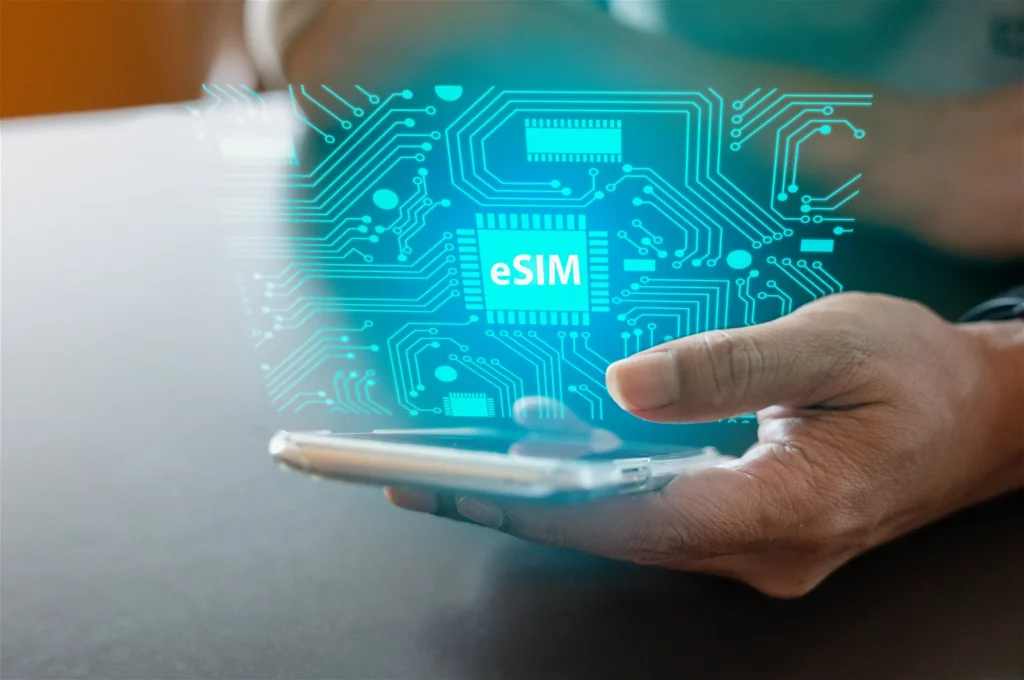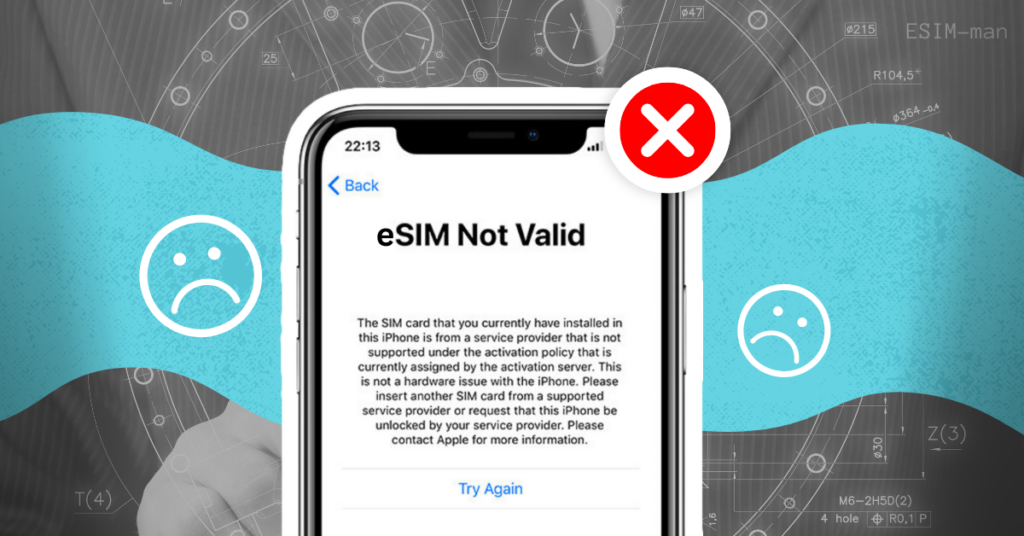Table of Contents
Did you know that the global shipments of eSIM-enabled smartphones have increased by 71% over the previous year, indicating a growing trend towards the adoption of Electronic SIM in the modern person’s lifestyle. Also, global averages at the moment show that about 30% of device users: phones, tablets and smart watches use MFF2 technology: M2M form factor and that number must grow in the coming years as more devices and operators support the technology. So what is an e-SIM? What are the problems with eSIM?
Electronic SIM technology: Definition and Benefits
This technology contains a small chip embedded in devices that allows remote provision and control of cellular services without the need for a physical SIM card. The technology is fairly new and developments are currently underway to improve the functionality of the new feature.

What are the advantages of eSIM:
- Firstly, one of the main advantages of the technology is the ability to manage cellular services remotely. This means that users can change operators or tariff plans without having to physically switch SIMs. It also allows mobile network operators to remotely provide and manage e-SIM services and if you run into an eSIM problem, a solution can be obtained online;
- Secondly, Embedded SIMs are more secure than traditional SIMs. They use advanced encryption and authentication techniques to protect against hacking and other security threats;
- Thirdly, the embedded chip works with a wide range of devices, including smartphones, tablets, laptops and even IoT devices. They can also be used with multiple carriers, allowing users to switch between providers without having to change SIMs.
What can be problems with eSIM when using
The virtual chip has many advantages, but there are also some potential limitations to use:
- This elaboration is still relatively new and not all devices are compatible with it. While more and more devices are released to support its function, some older devices may not be able to use the technology;
- It is interesting that not all carriers support eSIM, so users may have a little choice of carriers if they wish to use this technology. However, many major operators now offer e-chip support;
- Limited regional availability: Embedded SIM is not yet available in all regions, so users in some regions may not be able to take advantage of this technology.
There are also specific problems that one starts to think about when one asks the question, “Why is my eSIM not working?”
- For example, one of the most common problems is activation failure. This can happen if there is a problem with the QR-code your representative provided, or if there is a compatibility issue between the device and your service provider;
- Some users report compatibility problems when trying to use e-SIM with certain devices or carriers. These problems may prevent correct operation or cause connectivity problems;
- Also report problems with data roaming when using the embedded chip. This may occur if the device cannot connect to the local network or if there are problems with the eSIM configuration.
According to numerous feedbacks, some customers may have concerns about the privacy and security of their data when using the eSIM, especially when they see that the eSIM is not working.
Related: “Is ESIM Safe? Everything You Need To Know“
This is due to the fact that the technology can be remotely activated and managed, raising security concerns for some users.
How to fix eSIM problems
- Activation failures – if eSIM fails to activate, this may be due to a QR code problem or a compatibility issue between the device and the operator. The solution could involve rechecking the readability of the code: to make sure it is correct, leave it to the operator to activate or try activating Embedded SIM on a different device;
- Compatibility problems – Is a visible eSIM not working? The card may not be compatible with a certain device or operator. The solution could include a compatibility check before you purchase the Embedded chip, firmware or software update on the device;
- If data roaming problems occur when using an eSIM, this may be due to the device not being able to connect to the local network or a configuration issue. The solution may involve ensuring that the device is correctly for data roaming or contacting your service provider for assistance;
- Privacy and security issues – If a user is concerned about the privacy and security of their data when using e-SIM, they can take measures to protect their data, such as using a virtual private network (VPN) or regularly checking their device for malware.
Summary
Electronic SIM technology has many advantages; users should be aware of potential issues before deciding to switch to Embedded SIM. However, as the technology improves and becomes more widespread, we can expect many solutions of these issues. And as the past few years have shown, using an electronic chip brings fewer inconveniences and problems than using a physical card.






